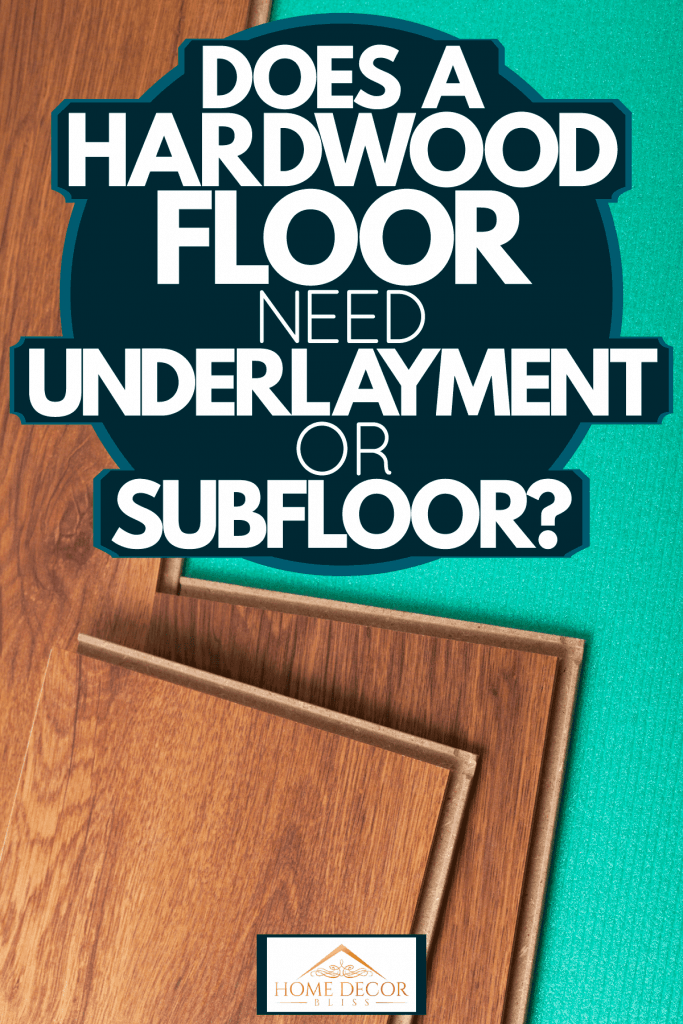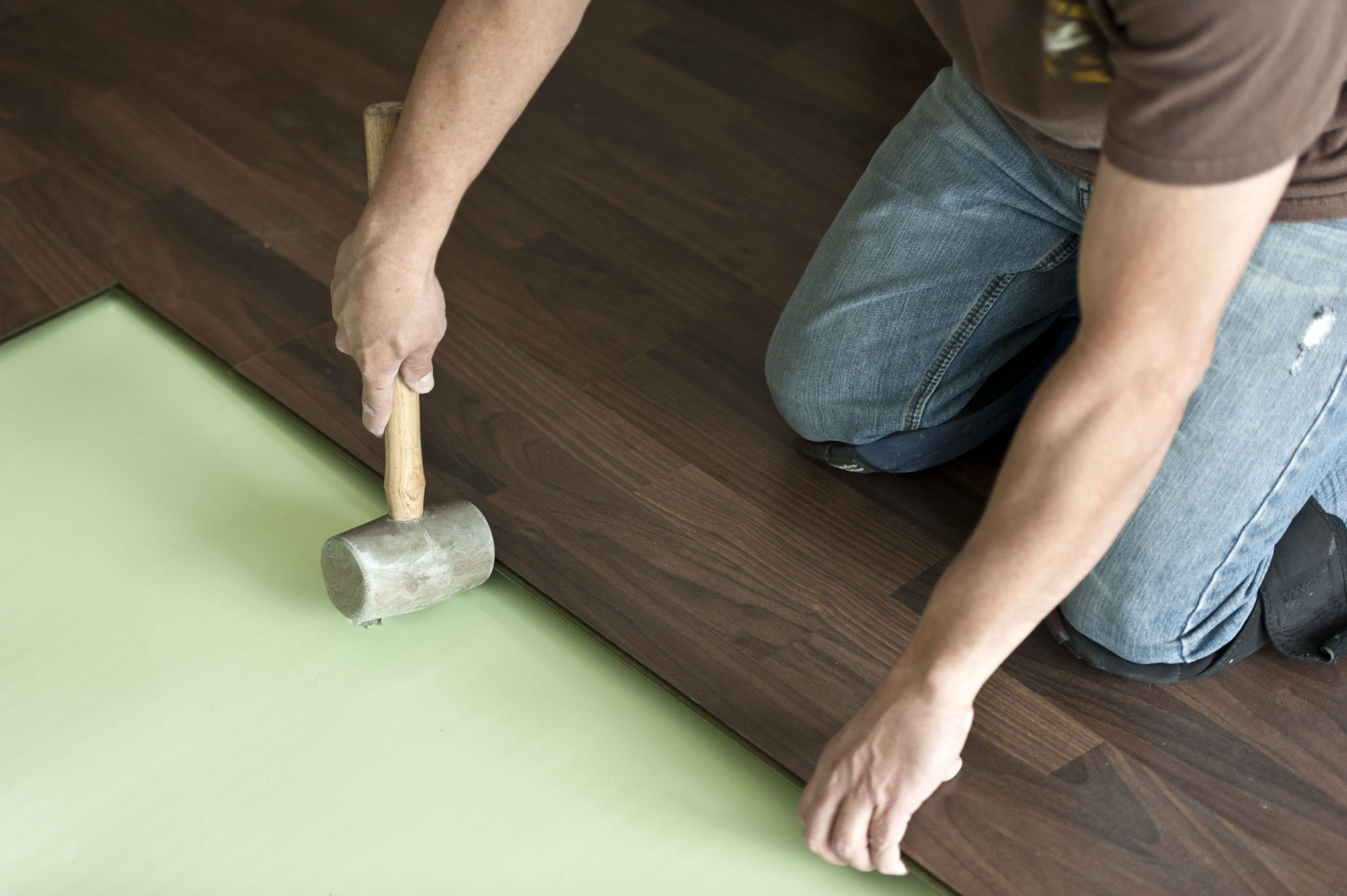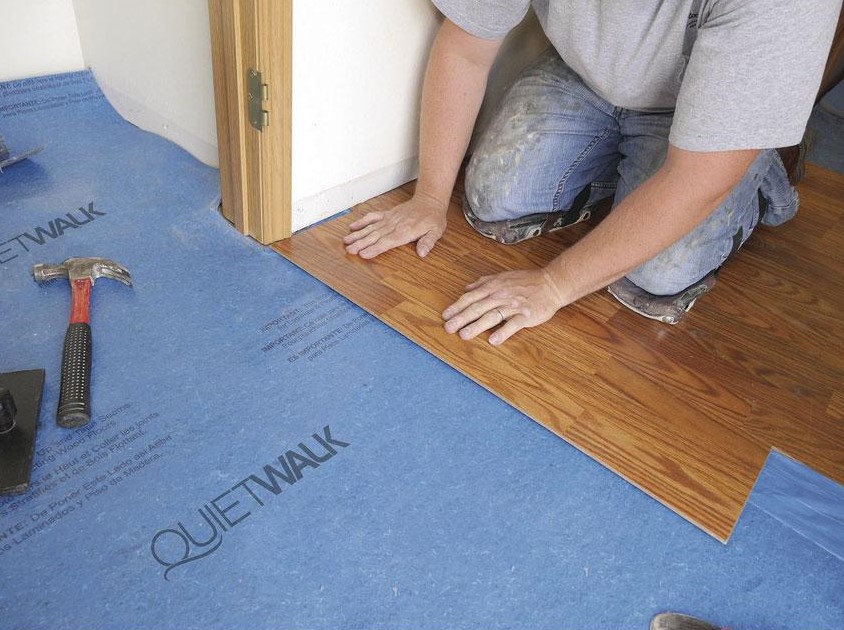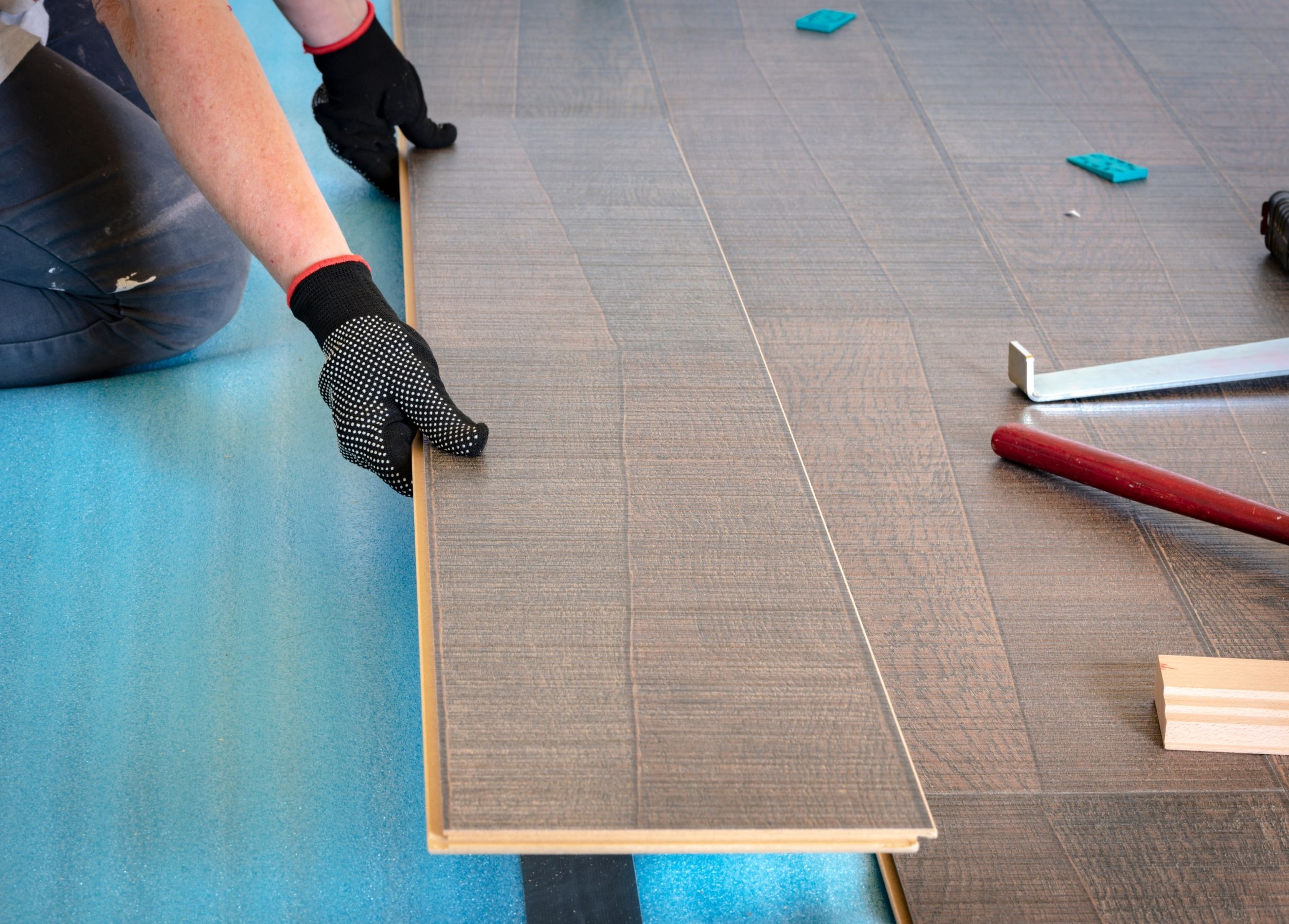Introducing Hardwood Flooring Underlayment
Hardwood flooring is a popular choice for many homeowners due to its durability, aesthetic appeal, and the value it adds to a home. However, installing hardwood flooring is not just about choosing the right type of wood; it also involves selecting the appropriate underlayment. The underlayment is a crucial component that sits between the subfloor and the hardwood flooring, providing a range of benefits that enhance the performance and longevity of the floor.
One of the primary functions of underlayment is to provide a smooth and even surface for the hardwood flooring to rest on. This is particularly important when the subfloor has minor imperfections or unevenness, as the underlayment can help to mitigate these issues, ensuring a stable and uniform floor. Without proper underlayment, these imperfections can lead to problems such as gaps, creaks, and uneven wear over time.
Underlayment also plays a critical role in sound insulation. Hardwood floors, while beautiful, can be noisy, especially in multi-story homes where footsteps and other sounds can travel easily through the floors. A good underlayment can help to absorb and dampen these sounds, creating a quieter and more comfortable living environment. This is particularly beneficial in apartment buildings and other shared living spaces where noise reduction is a priority.
Moisture protection is another essential function of underlayment. Moisture can be a significant threat to hardwood flooring, causing it to warp, swell, or even rot. Underlayment with moisture barriers can help to protect the hardwood from any moisture that may seep up from the subfloor, preserving the integrity and appearance of the floor. This is especially important in areas prone to high humidity or where the subfloor is made of concrete, which can retain moisture.
Thermal insulation is an often-overlooked benefit of underlayment. It can help to maintain a more consistent temperature in a room by providing an additional layer of insulation between the cold subfloor and the hardwood flooring. This can be particularly beneficial in colder climates, where a warm floor can contribute significantly to the overall comfort of a home.
Finally, underlayment can make the installation process easier and more efficient. It can help to create a more forgiving surface that accommodates minor subfloor imperfections, making it easier to lay the hardwood flooring evenly. Additionally, some underlayments come with adhesive backing or other features that simplify the installation process, saving time and effort for DIY enthusiasts and professional installers alike.

Types of Underlayment for Hardwood Flooring
There are several types of underlayment available for hardwood flooring, each with its unique characteristics and benefits. Choosing the right type depends on various factors, including the specific needs of the project, the type of subfloor, and the desired performance attributes.
Foam underlayment is one of the most common and affordable options. It is made from polyethylene or polypropylene and is easy to install. Foam underlayment provides basic moisture protection and sound insulation, making it suitable for many residential applications. However, it may not be the best choice for areas with high moisture levels or heavy foot traffic.
Felt underlayment is another popular choice, especially for those looking for enhanced sound insulation and comfort underfoot. Felt is made from recycled fibers, often including wool or jute, and provides excellent cushioning and thermal insulation. Felt underlayment is thicker than foam, which can help to smooth out minor subfloor imperfections. It is particularly well-suited for traditional hardwood installations where comfort and sound reduction are priorities.
Rubber underlayment is known for its superior sound insulation properties. It is an excellent choice for multi-story buildings and areas where noise reduction is a significant concern. Rubber is also highly durable and provides excellent moisture protection. Its higher cost compared to foam or felt underlayment is often justified by its performance benefits, making it a preferred option for high-end residential and commercial installations.
Cork underlayment offers a unique combination of sound insulation, thermal insulation, and natural resistance to mold and mildew. Cork is a sustainable and eco-friendly material, making it an attractive choice for environmentally conscious homeowners. Its resilience and comfort underfoot make it suitable for a variety of hardwood flooring installations. However, cork may not provide as much moisture protection as rubber or specialized foam underlayments, so it may not be ideal for areas prone to high humidity.
Combination underlayments are designed to offer multiple benefits in one product. These underlayments often include foam or felt base with an integrated moisture barrier and sound insulation properties. Combination underlayments can simplify the installation process by providing all the necessary features in a single layer. They are a versatile choice for homeowners looking for a balance of performance and convenience.
Plywood underlayment is typically used in situations where additional structural support is needed. This type of underlayment is made from thin layers of wood veneer glued together to form a strong, stable base. Plywood underlayment is particularly useful when installing hardwood flooring over a subfloor that may be uneven or require extra reinforcement. It can also help to elevate the height of the floor to match other flooring surfaces in the home.
Benefits of Using Underlayment for Hardwood Flooring
The use of underlayment for hardwood flooring provides numerous benefits that enhance the overall performance and longevity of the floor. One of the most significant advantages is the increased stability it offers. Underlayment helps to create a smooth and even surface for the hardwood flooring, reducing the risk of gaps, creaks, and uneven wear over time. This stability is crucial for maintaining the structural integrity of the floor, especially in high-traffic areas.
Sound insulation is another critical benefit of underlayment. Hardwood floors can be noisy, especially when installed in multi-story homes or apartment buildings. Underlayment helps to absorb and dampen sounds, reducing the transmission of noise between floors. This creates a quieter and more comfortable living environment, which is particularly important in shared living spaces or areas where noise control is a priority.
Moisture protection is essential for preserving the integrity of hardwood flooring. Moisture can cause hardwood to warp, swell, or rot, leading to costly repairs or replacements. Underlayment with moisture barriers helps to protect the hardwood from any moisture that may seep up from the subfloor. This is especially important in areas with high humidity or where the subfloor is made of concrete, which can retain moisture. Proper moisture protection ensures the longevity and durability of the hardwood flooring.
Thermal insulation provided by underlayment helps to maintain a consistent temperature in a room. This can be particularly beneficial in colder climates, where a warm floor can significantly contribute to the overall comfort of a home. By providing an additional layer of insulation between the cold subfloor and the hardwood flooring, underlayment helps to reduce heat loss and improve energy efficiency. This can lead to lower heating costs and a more comfortable living environment.
Comfort underfoot is another advantage of using underlayment. Certain types of underlayment, such as felt or cork, provide a cushioned layer that makes walking on the hardwood floor more comfortable. This can be especially beneficial in areas where people spend a lot of time standing or walking, such as kitchens or living rooms. The added comfort enhances the overall experience of using hardwood flooring.
Ease of installation is a practical benefit that should not be overlooked. Underlayment can make the installation process easier and more efficient by providing a more forgiving surface that accommodates minor subfloor imperfections. Some underlayments come with adhesive backing or other features that simplify the installation process, saving time and effort for both DIY enthusiasts and professional installers. This ease of installation can help to ensure a successful and high-quality hardwood flooring project.
Choosing the Right Underlayment for Your Project
Selecting the appropriate underlayment for your hardwood flooring project involves considering several factors to ensure the best performance and longevity of the floor. One of the primary considerations is the type of subfloor. Different subfloors, such as concrete or plywood, may require specific types of underlayment to address unique challenges like moisture control or structural support. Understanding the characteristics of your subfloor is crucial in making an informed decision.
The level of moisture protection needed is another important factor. In areas prone to high humidity or where moisture is a concern, such as basements or bathrooms, choosing an underlayment with a built-in moisture barrier is essential. This will help to prevent moisture from seeping into the hardwood flooring and causing damage. For areas with minimal moisture exposure, a standard underlayment without an additional moisture barrier may suffice.
Sound insulation requirements should also be taken into account. If noise reduction is a priority, such as in multi-story homes or apartment buildings, selecting an underlayment with superior sound-dampening properties is essential. Materials like rubber or cork are excellent choices for their ability to absorb and reduce sound transmission. For areas where noise is less of a concern, a basic foam or felt underlayment may be adequate.
The type of hardwood flooring being installed can influence the choice of underlayment. Solid hardwood floors, which are nailed or stapled to the subfloor, may require a different underlayment compared to engineered hardwood floors, which are typically glued or floated. Understanding the installation method of the hardwood flooring will help to determine the most suitable underlayment to ensure proper support and performance.
Budget considerations are always a factor in any home improvement project. While high-quality underlayment options like rubber or cork may offer superior benefits, they can also be more expensive. Balancing the desired performance attributes with the available budget is important. In many cases, a mid-range underlayment that provides a good balance of moisture protection, sound insulation, and comfort can be a cost-effective choice without compromising on quality.
Finally, consider any specific requirements or preferences for the project. For example, if sustainability is a priority, choosing an eco-friendly underlayment made from recycled materials like cork or felt can align with environmental goals. Additionally, some underlayments offer additional features like integrated adhesive strips or self-leveling properties, which can simplify the installation process and improve the overall performance of the hardwood flooring.
Installation Process
The installation of underlayment for hardwood flooring is a crucial step that can significantly impact the performance and longevity of the floor. Proper installation ensures that the underlayment provides the necessary support, moisture protection, and sound insulation. Following a systematic approach can help to achieve the best results.
Begin by thoroughly cleaning the subfloor to remove any dirt, dust, or debris. A clean subfloor is essential for proper adhesion and performance of the underlayment. Sweep or vacuum the area, and use a damp cloth to wipe away any remaining particles. Ensure the subfloor is completely dry before proceeding to the next step, as moisture can compromise the effectiveness of the underlayment.
Next, inspect the subfloor for any imperfections or damage that needs to be addressed. Fill any cracks or holes with a suitable filler, and sand down any high spots to create a smooth and even surface. This step is particularly important for ensuring that the underlayment lies flat and provides the necessary support for the hardwood flooring. Addressing subfloor imperfections before installing the underlayment can prevent future problems such as gaps, creaks, or uneven wear.
Roll out the underlayment across the subfloor, starting from one corner of the room. Allow the underlayment to extend up the walls by a few inches, which can be trimmed later. This extension helps to ensure full coverage and can be tucked under the baseboards for a seamless finish. For larger rooms, you may need to cut and piece together multiple sheets of underlayment. Overlap the edges of the sheets by a few inches, and secure them with underlayment tape to create a continuous barrier.
Ensure the underlayment is laid out smoothly, with no wrinkles or folds. Use a utility knife to trim any excess material around the edges of the room, ensuring a precise fit. If the underlayment has an adhesive backing, peel off the protective film and press the underlayment firmly onto the subfloor. For underlayments without adhesive backing, use underlayment tape to secure the seams and prevent movement during the installation of the hardwood flooring.
If the underlayment includes a built-in moisture barrier, make sure it is installed with the barrier facing the subfloor. This orientation helps to prevent moisture from seeping up from the subfloor and reaching the hardwood flooring. Follow the manufacturer’s instructions regarding the correct placement and installation of the moisture barrier to ensure optimal protection.
Once the underlayment is securely in place, you can proceed with the installation of the hardwood flooring. Whether you are using a nail-down, glue-down, or floating installation method, the underlayment will provide the necessary support and cushioning. Carefully follow the hardwood flooring manufacturer’s instructions for installation, ensuring that the underlayment remains smooth and intact throughout the process.
Common Mistakes to Avoid with Hardwood Flooring Underlayment
When installing underlayment for hardwood flooring, certain common mistakes can compromise the effectiveness and longevity of the floor. One frequent mistake is inadequate subfloor preparation. Failing to thoroughly clean and level the subfloor can lead to issues such as poor adhesion, uneven surfaces, and gaps. Ensure the subfloor is clean, dry, and free of imperfections before installing the underlayment.
Another common error is using the wrong type of underlayment for the specific project. Different types of underlayment offer varying levels of moisture protection, sound insulation, and support. Choosing an underlayment that does not match the requirements of the subfloor, climate, or type of hardwood flooring can result in subpar performance. Carefully consider the specific needs of your project when selecting the underlayment.
Incorrect installation of the underlayment can also cause problems. Overlapping seams incorrectly, failing to secure the underlayment properly, or allowing wrinkles and folds can all lead to issues such as movement, noise, and reduced effectiveness. Follow the manufacturer’s instructions meticulously, and take the time to ensure the underlayment is laid out smoothly and securely.
Skipping the moisture barrier is a critical mistake, especially in areas prone to high humidity or where moisture is a concern. Moisture can cause significant damage to hardwood flooring, leading to warping, swelling, and rot. Ensure that the underlayment includes an appropriate moisture barrier, and install it correctly to provide adequate protection.
Neglecting to acclimate the underlayment and hardwood flooring to the room’s temperature and humidity can also lead to problems. Both the underlayment and the hardwood flooring should be allowed to acclimate in the room where they will be installed for at least 48 hours. This helps to prevent expansion and contraction after installation, reducing the risk of gaps, buckling, and other issues.
Finally, inadequate maintenance of the underlayment and hardwood flooring can reduce their lifespan and performance. Regular cleaning, prompt spill cleanup, and periodic inspections are essential to keep the floor in good condition. Ignoring maintenance can lead to stains, scratches, and other damage that diminishes the floor’s aesthetic appeal and functionality.
What is the purpose of underlayment for hardwood flooring?
Underlayment serves several essential purposes in hardwood flooring installations. It provides a smooth and even surface for the hardwood flooring to rest on, which helps to mitigate minor subfloor imperfections. Underlayment also enhances sound insulation by absorbing and dampening noises, creating a quieter living environment. Additionally, it offers moisture protection, preventing moisture from seeping up from the subfloor and damaging the hardwood flooring. Underlayment can also provide thermal insulation, maintaining a more consistent temperature in the room, and adding comfort underfoot.
Can I install hardwood flooring without underlayment?
While it is technically possible to install hardwood flooring without underlayment, it is not recommended. Underlayment provides critical benefits such as moisture protection, sound insulation, and a smoother surface for installation. Without underlayment, hardwood flooring is more susceptible to damage from moisture, noise, and subfloor imperfections. Skipping underlayment can lead to problems such as warping, creaking, and uneven wear over time. Using underlayment helps to ensure the longevity, performance, and comfort of the hardwood flooring.
How do I choose the right underlayment for my hardwood flooring?
Choosing the right underlayment involves considering several factors, including the type of subfloor, the level of moisture protection needed, sound insulation requirements, the type of hardwood flooring, budget, and any specific project preferences. For example, concrete subfloors may require underlayment with a moisture barrier, while multi-story homes may benefit from underlayment with superior sound insulation. Understanding the unique needs of your project and consulting with flooring professionals can help to make an informed decision.
How does underlayment affect sound insulation in hardwood flooring?
Underlayment significantly enhances sound insulation in hardwood flooring installations by absorbing and dampening noises. This is particularly important in multi-story homes or apartment buildings, where footsteps and other sounds can easily travel between floors. Underlayment materials such as rubber, cork, or felt are known for their excellent sound-dampening properties. These materials help to reduce noise transmission, creating a quieter and more comfortable living environment. Properly installed underlayment can make a noticeable difference in noise reduction.
Is it necessary to use a moisture barrier with underlayment?
Using a moisture barrier with underlayment is crucial in areas prone to high humidity or where moisture is a concern, such as basements or concrete subfloors. Moisture can cause significant damage to hardwood flooring, leading to warping, swelling, and rot. Many underlayments come with built-in moisture barriers designed to prevent moisture from seeping up from the subfloor. Ensuring that the underlayment includes an appropriate moisture barrier and installing it correctly helps to protect the hardwood flooring and extend its lifespan.
Can underlayment be used with all types of hardwood flooring?
Underlayment can be used with most types of hardwood flooring, including solid and engineered hardwood. However, the specific type of underlayment may vary depending on the installation method of the hardwood flooring. For example, solid hardwood floors that are nailed or stapled to the subfloor may require different underlayment compared to engineered hardwood floors that are glued or floated. It is essential to choose an underlayment that is compatible with the type of hardwood flooring and installation method to ensure optimal performance and support.
Related Posts:



/new-floor-installation-185270632-582b722c3df78c6f6af0a8ab.jpg)






